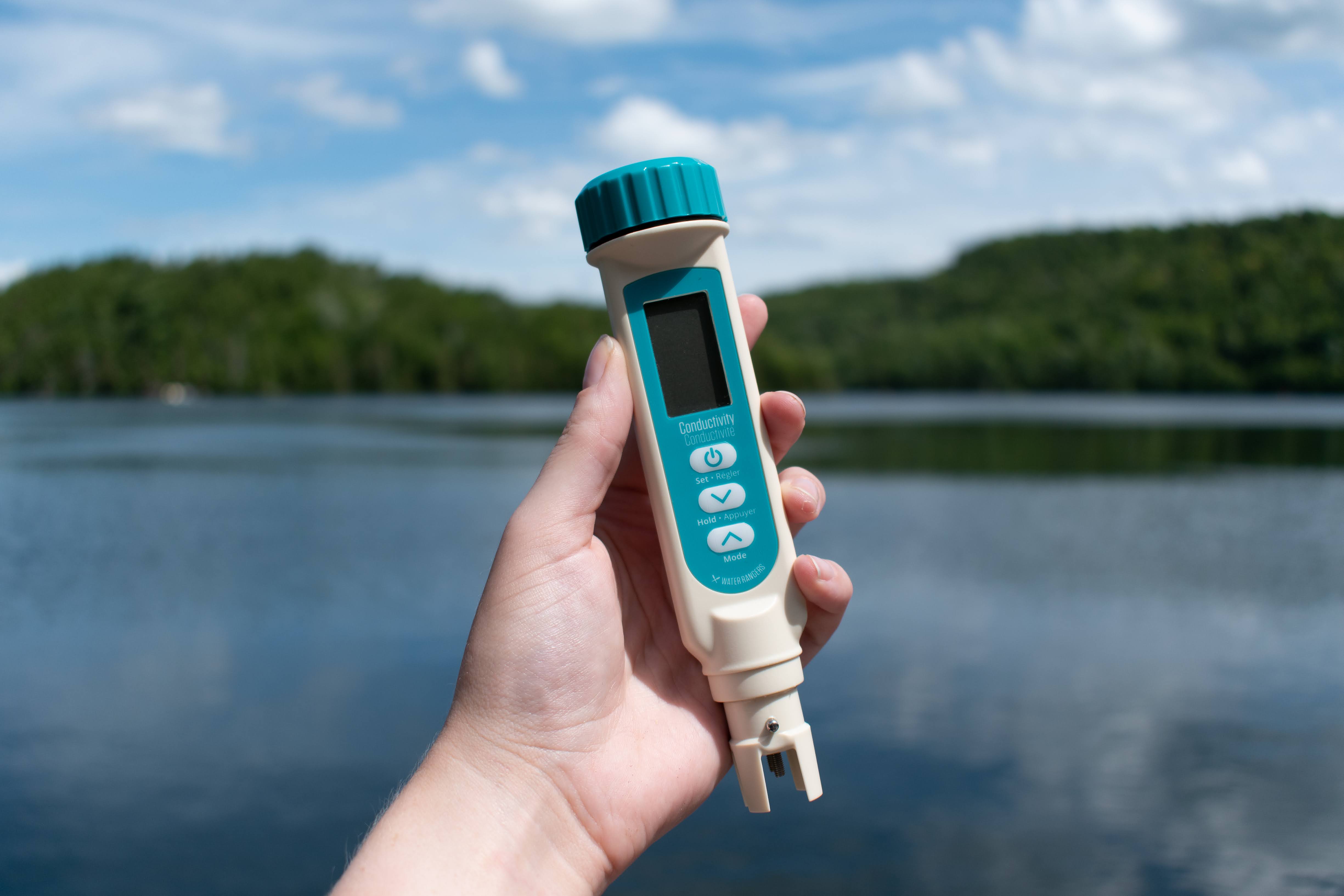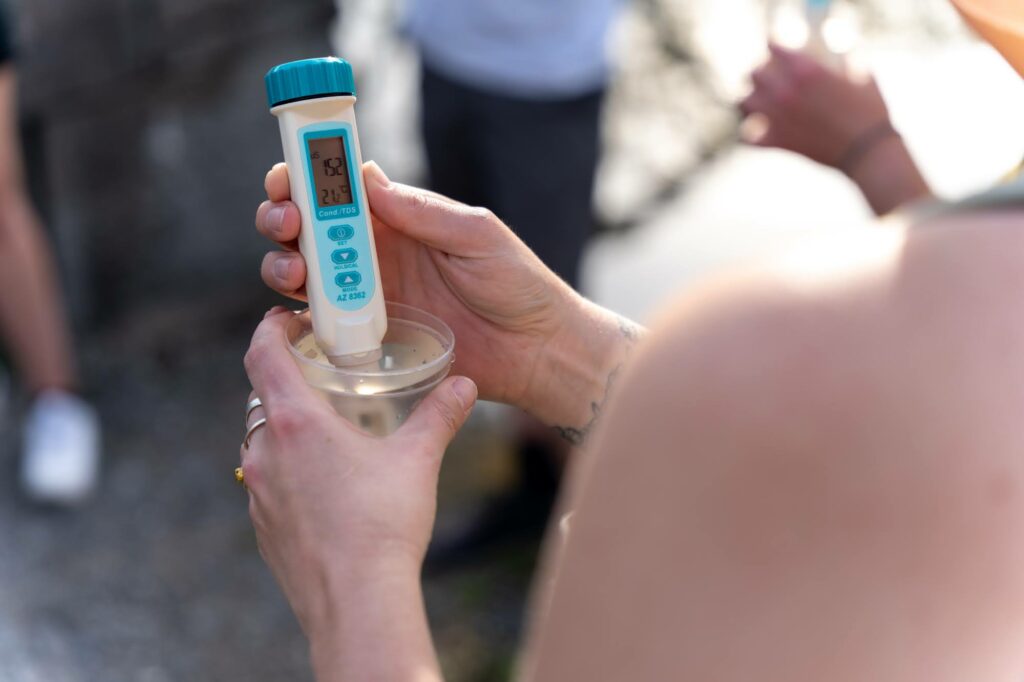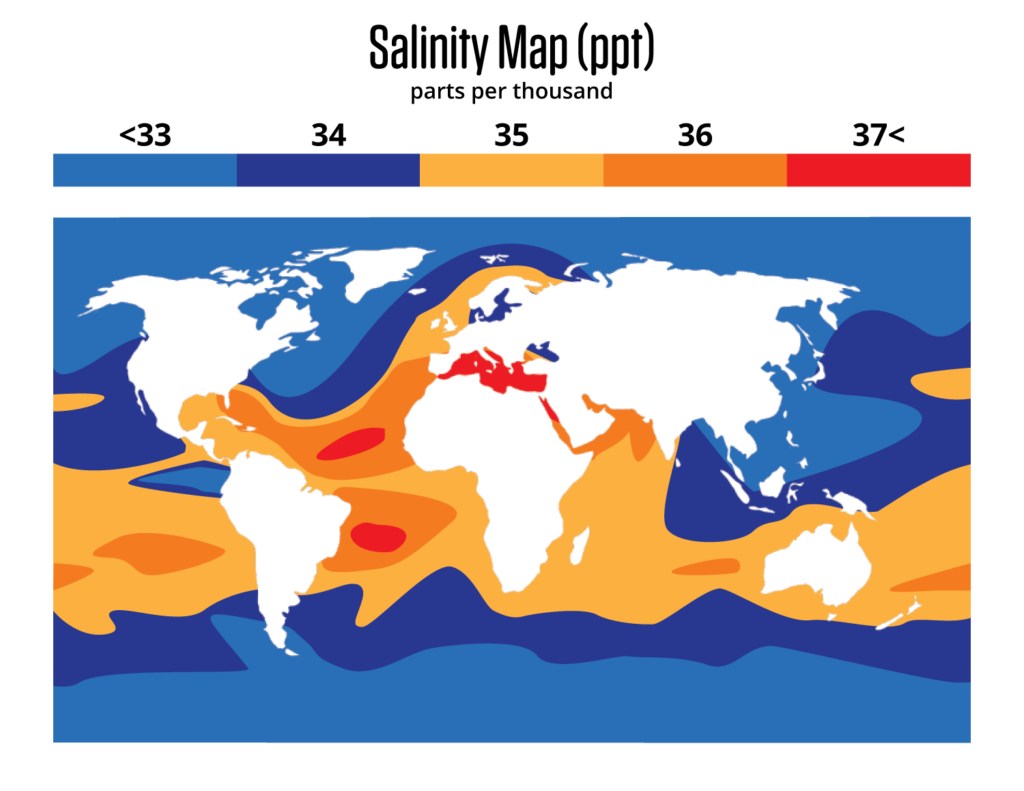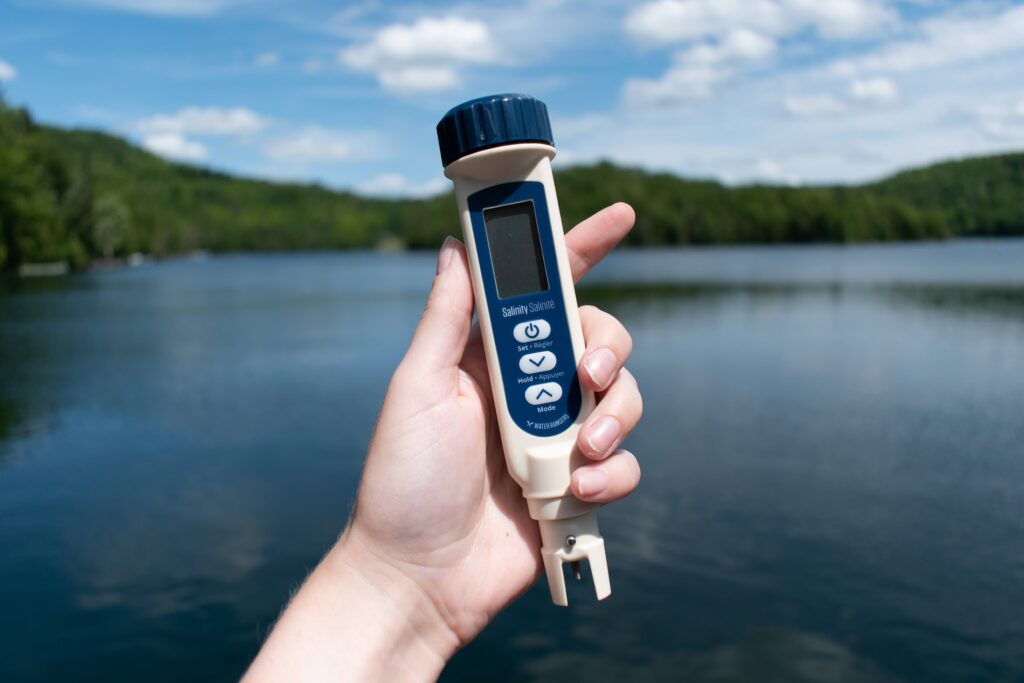Conductivity & Salinity
Have you ever tested for conductivity or salinity? Chances are it is a steadfast part of your regular water testing. Did you know that we have rigorously tested our conductivity meters against leading professional conductivity probes? We found that our small but mighty conductivity meters hold up to professional probes with a 99% accuracy rate! But what even are conductivity and salinity anyway? These frequently asked questions may hold the answers for you:

What is conductivity?
Conductivity is the ability of water to conduct an electrical current.
How do conductivity meters work?
Within water there are dissolved ions. Ions are any molecule with an electric charge. Dissolved ions in water are able to conduct electricity. Conductivity meters measure water’s ability to conduct electricity through these ions. The more ions, the better the water can conduct electricity! Our conductivity meter gives a reading in units of microSiemens (μS) or milliSiemens (mS).
Why should I measure conductivity?
Every body of water has its own normal unique conductivity, based on its bedrock, shores, and the ecosystem that surrounds it. It is important to establish a baseline as some bodies of water have naturally high levels due to their geology and geography.
We can use conductivity as an early warning system for potential problems that require lab tests. If we see a sharp increase or decrease from our normal (baseline) readings, we know something may be wrong. We can’t assume though that a higher conductivity is related to pollution. Sometimes, heavy rain or erosion brings soil into the water, which can increase its conductivity. Lab testing is the only way to determine precisely what is causing the reading, and therefore help us determine if it is caused by pollution.

Do I need to calibrate my conductivity meter?
Your conductivity meter comes calibrated, and should be calibrated once a year. We recommend calibrating it in the spring, at the beginning of the testing season. Check out our page with detailed instructions on how to calibrate your conductivity meter!
What about road salts?
One thing that can drastically increase conductivity readings are road salts. Road salts are a cheap and efficient way to melt snow and ice. They keep roadways and sidewalks safe for travel. In fact, road salt applications decrease road accidents by a whopping 80 percent!
The most common salts applied to our roads are inorganic sodium chloride, followed by calcium chloride and magnesium chloride. Road salts mix with nearby snow and when that snow starts to melt these salts make their way into local water bodies. The ions associated with the compounds road salts are made of are what increase conductivity. Learn more about the impact of road salts on the environment and groups that are actively monitoring road salts in their local water bodies.
What is salinity?
Salinity is a measure of the amount of dissolved salts in the water.
How do salinity meters work?
Seawater, or saltwater, is full of salts. These salts are primarily sodium chloride (NaCl) with a few other types of salts mixed in. Salinity meters measure these salts in units of parts per thousand (ppt) or parts per million (ppm) when found in smaller concentrations.

Why should I measure salinity?
Salinity around the world normally stays relatively stable, but climate change is disrupting typical weather patterns. These changes can mean more precipitation (rain and snow) and evaporation (from higher temperatures). For now, global salinity readings have only changed by a few decimal points. Even such a small change is worrisome, because in the last 50 years, salinity levels all over the world have remained exceptionally consistent. This is why testing salinity levels is so important. Even small changes in salinity can be an indicator of much larger changes in the environment.

How are conductivity and salinity related?
The presence of dissolved ions (including salts such as sodium) increase both salinity and conductivity, therefore the two measures are related. The salinity meter can only measure ions that come from salts whereas the conductivity meter measures ions that come from salts and other sources.
Can I use my conductivity meter to measure salinity in seawater?
You can, but it is better to use a salinity meter. There’s no easy conversion between conductivity and salinity. When our conductivity meter is put into seawater it will likely change the units of measurement from microSiemens (μS) to milliSiemens (mS), where 1 milliSiemens (mS) is equal to 1,000 microSiemens (μS). That means a much higher concentration of ions must be present in the water for the conductivity meter to make this switch from μS to mS. Be careful! Our conductivity meter can only measure up to 20 mS, after which it will display an error message. Putting your conductivity meter in water with a higher conductivity could damage the probe. If this happens, make sure to rinse the probe with tap or distilled water. On the Water Rangers data platform we record salinity in ppt. Ideally a salinity meter is used to measure salinity in seawater
Can I use my salinity meter to measure conductivity in freshwater?
You can but it is better to use a conductivity meter. Unfortunately, there’s no easy conversion between salinity and conductivity. When using a salinity meter in freshwater, the salinity meter will likely change its units from parts per thousand (ppt) to parts per million (ppm). 1 ppt is equal to 1,000 ppm. Seawater generally has salt concentrations in the 33 – 38 ppt range. Brackish (0.5 – 30ppt) or freshwater have much lower concentrations of salt compared to seawater causing the salinity meter to use ppm as the unit of measurement.
Did you find the answer you were looking for?
These are just a few of the questions our water testers have asked us! If you have a question about conductivity or salinity that wasn’t answered, please let us know.